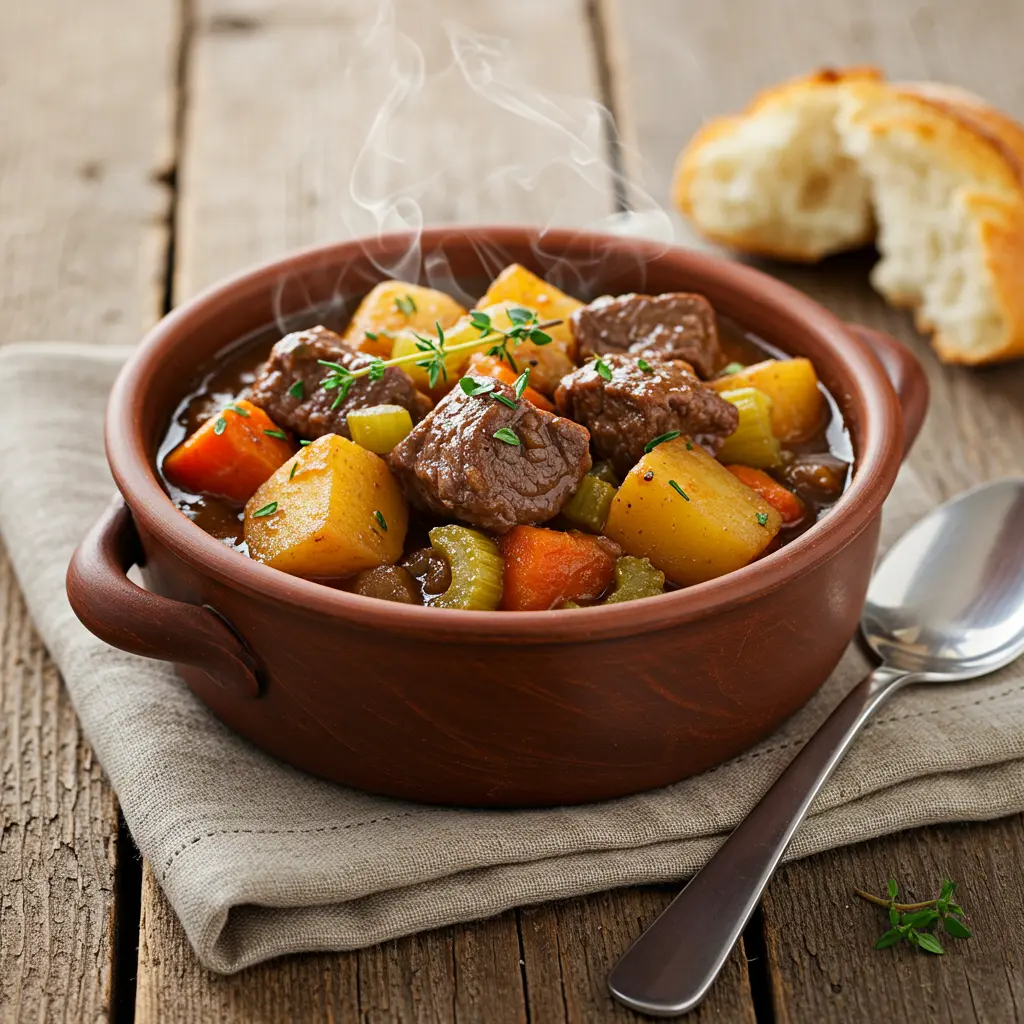Ingredients
Equipment
Method
Step 1: Marinate the Beef
- The journey to exceptional Puerto Rican beef stew begins with proper marination. In a large bowl, combine the cubed beef with adobo seasoning, olive oil, vinegar, and minced garlic. Mix thoroughly to ensure each piece is well-coated. Cover and refrigerate for at least 2 hours, though overnight marination will deliver the most flavorful results.
- This marination process is crucial for authentic Puerto Rican beef stew. It not only tenderizes the meat but also infuses it with the foundation flavors that define the dish. Many local cooks insist this step cannot be rushed if you want truly authentic carne guisada.
Step 2: Prepare the Sofrito
- While store-bought sofrito can work in a pinch, making your own delivers unparalleled freshness and flavor for your Puerto Rican beef stew. To prepare homemade sofrito, combine onion, bell peppers, garlic, cilantro, and culantro in a food processor. Pulse until you achieve a fine, paste-like consistency.
- Sofrito is the heart and soul of Puerto Rican cooking, and particularly important for authentic beef stew. This aromatic base infuses the dish with layers of flavor that simply can't be replicated with shortcuts. Many Puerto Rican families have their own closely guarded sofrito recipes that have been passed down through generations.
Step 3: Sear the Meat
- Heat olive oil in a large, heavy-bottomed pot or Dutch oven over medium-high heat. Working in batches to avoid overcrowding, sear the marinated beef until browned on all sides. This step is vital for developing rich flavor in your Puerto Rican beef stew through the Maillard reaction.
- Transfer the seared meat to a plate and set aside. Don't rush this process—proper searing can take 3-4 minutes per batch, but it's worth the time investment for authentic carne guisada.
Step 4: Build the Flavor Base
- In the same pot, add a bit more oil if needed, then add the sofrito. Sauté for about 3-4 minutes until fragrant and slightly reduced. Add the sazón, stirring to incorporate the vibrant color and flavor throughout the sofrito.
- Next, add tomato sauce and tomato paste, stirring constantly to prevent burning. This creates the signature sauce for Puerto Rican beef stew that balances acidity with richness. Add bay leaves and oregano, stirring to incorporate all flavors.
Step 5: Simmer to Perfection
- Return the seared beef to the pot, along with any accumulated juices. Pour in the beef broth, stirring to combine all elements. Bring the mixture to a boil, then reduce heat to low, cover, and simmer for about 1.5 hours, or until the meat begins to become tender.
- This slow-cooking process is essential for authentic Puerto Rican beef stew. The extended simmering allows the flavors to meld and the meat to tenderize—hallmarks of traditional carne guisada. Many local cooks judge the quality of beef stew by how easily the meat falls apart with just slight pressure from a fork.
Step 6: Add Vegetables
- Once the meat has simmered for about 1.5 hours, add the diced potatoes and carrots to the pot. If using olives and capers, add them at this time as well. Cover and continue to simmer for an additional 30-45 minutes, until both the vegetables and meat are fork-tender.
- The vegetables should be soft but not mushy in authentic Puerto Rican beef stew. They absorb the flavorful sauce while adding texture and substance to the dish. Some regional variations of carne guisada might also include sweet plantains or yuca at this stage.
Step 7: Final Adjustments
- Taste your Puerto Rican beef stew and adjust seasonings as needed. Remove bay leaves before serving. If you prefer a thicker consistency, you can either simmer uncovered for an additional 15-20 minutes or create a quick slurry with 1 tablespoon cornstarch mixed with 2 tablespoons cold water, then stir it into the simmering stew.
Notes
- For the most authentic flavor, marinate the beef overnight rather than just 2 hours
- This stew tastes even better the next day, making it perfect for meal prep
- If you can't find culantro (recao) or sazón, double the cilantro and use the substitution blend mentioned in the FAQ
